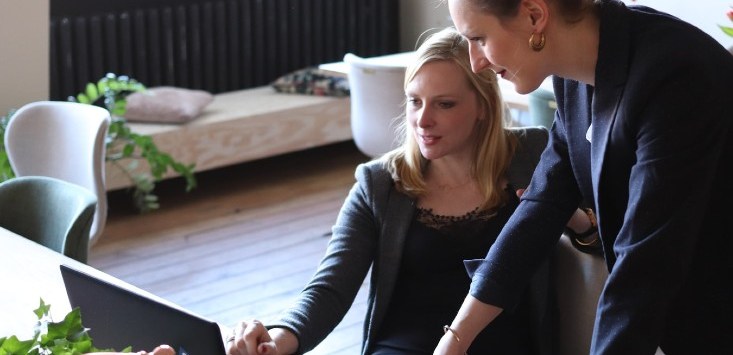
Source: Unsplash/CoWomen.
A total of 286 years. This is the alarming number, put forward by the United Nations, that it will take for global gender equality to be realised. Let that sink in.
The UN’s ‘Progress on the Sustainable Development Goals: The Gender Snapshot 2022’ also reports that it will take 140 years for equal representation in positions of power.
As a previous board member of Entrepreneurs’ Organization (EO) Sydney with a passion for all things diversity, equity, inclusion and belonging (DEIB), I’m hopeful that, if not the world over, at least in Australia we can take steps to shave years off these figures for the entrepreneurial community.
While 66% of new businesses created in Australia in the past decade have been founded by women, nearly half (43%) of women surveyed by the Australian Small Business and Family Enterprise Ombudsman’s office identified access to capital as a central barrier to growth.
Women are told ‘no’ from a funding perspective nine times more than men.
A 2020 (US) report by the Harvard Business Review found women-led startups received only 2.3% of V.C. funding. While only 25% of women-led businesses seek funding and on average ask $35,000 less in business financing than men, they are still usually offered much smaller loans at drastically higher interest rates.
Gender bias in funding opportunities echoes the gender bias we see in employment and carries the same missed opportunities for growth and success.
Globally, there are initiatives like Beyond the Billion trying to tackle this very issue — a global commitment to invest more than $1 billion in female tech founders to reverse the impacts of COVID-19 that set women back economically significantly further than men.
In recent years there has been a groundswell of support for female entrepreneurs. ‘Women of EO’ a sub-group of Entrepreneurs’ Organisation is just one of a growing number of inclusive and safe spaces for women founders to connect with other entrepreneurs at a similar stage in business on the unique issues impacting women in business.
Beyond the untapped economic growth potential, raising the success of women in business is important role modelling for generations to come. Though there is more to be done, change is happening.
Here are my five steps to move towards gender parity in Australia’s entrepreneur community.
1. More women on entrepreneurial boards – with a set target
We need to see more women on boards and having a seat at the table. The tone is set from the top. If the boards of organisations across the country believe in the value of women in entrepreneurship, membership to said groups will directly increase. If they don’t, numbers go down. The tone is set by the president and the board of these organisations.
2. Clear targets
We need clear targets for female entrepreneurs joining organisations like EO. Levelling up gender inequality in the entrepreneurial world is not different from an organisation’s strategy for revenue growth. If you don’t have targets and measurements, it’s impossible to track the success of these efforts.
3. Inclusion first
Before focusing on diversity and levelling the playing field for women in the entrepreneurial community, inclusion needs to be peppered throughout an organisation, its communications and its activities. For example, all the events being organised need to be inclusive for women as well as men, and not just in the type of the activity itself.
Factors that can help some women feel more included are:
- Ensuring events do not consistently clash with family commitments;
- Avoiding exclusively gender-based events;
- Ensuring a diverse group of entrepreneurs are represented at events and gatherings; and
- Using inclusive and non-gendered language for internal and external communications.
You start by looking at inclusion across everything, and by very nature, you end up with greater diversity.
4. Psychological factors
Just as women are significantly less likely to apply for a job where they meet only some of the requirements than men, women are socially conditioned to put their hands up less. This is something an inclusive environment can change. The statistics mentioned earlier on fewer women applying for funding and asking for less support show we need further initiatives like ‘Beyond the Billion’ to commit to balancing the scales, and more Australian VCs to put their support behind these programs.
5. Look at diversity beyond gender
Under 35s and LGBTIQ+ communities need support to both join and stay within entrepreneur communities. Having an entrepreneurial community that reflects the real-world population does not just provide us all with greater access to an expanded world view, but also wider perspectives on how we can grow and nurture our business and subsequent team.
Lastly, as women business owners we can face heavy criticism compared with our male counterparts. There have been male-only groups for a hundred years, so if a woman-only group or community within a community provides a safe environment to build women up, that is an achievement and a step in the right direction. Let’s keep our focus on the end goal, which is to get 50/50 equality in entrepreneurship and pave the way for our children and future generations of leaders.
Victoria Butt is the founder of Parity Consulting & Evolve Sales Training and a recent Entrepreneurs’ Organization Sydney board member
Handpicked for you

Four Australian startups that have raised almost $7 million this week



COMMENTS
SmartCompany is committed to hosting lively discussions. Help us keep the conversation useful, interesting and welcoming. We aim to publish comments quickly in the interest of promoting robust conversation, but we’re a small team and we deploy filters to protect against legal risk. Occasionally your comment may be held up while it is being reviewed, but we’re working as fast as we can to keep the conversation rolling.
The SmartCompany comment section is members-only content. Please subscribe to leave a comment.
The SmartCompany comment section is members-only content. Please login to leave a comment.